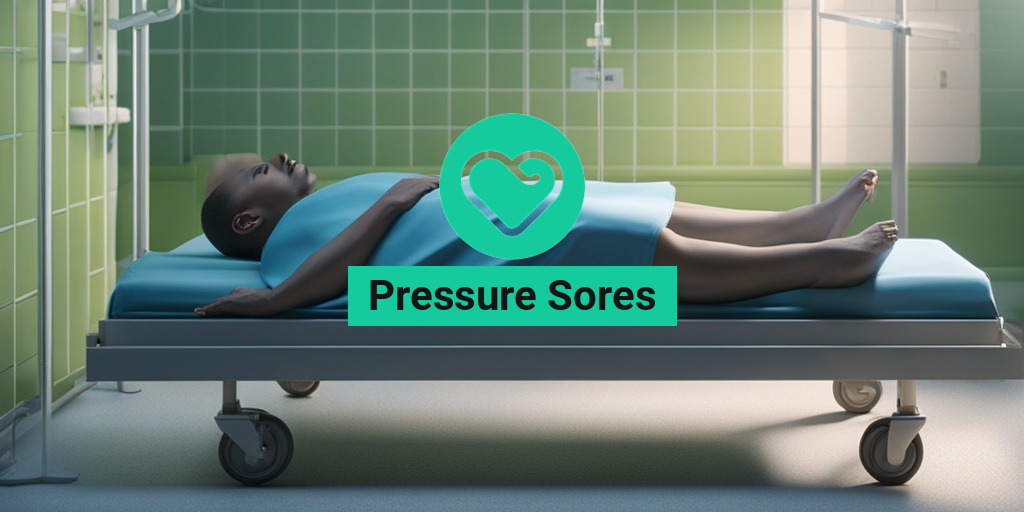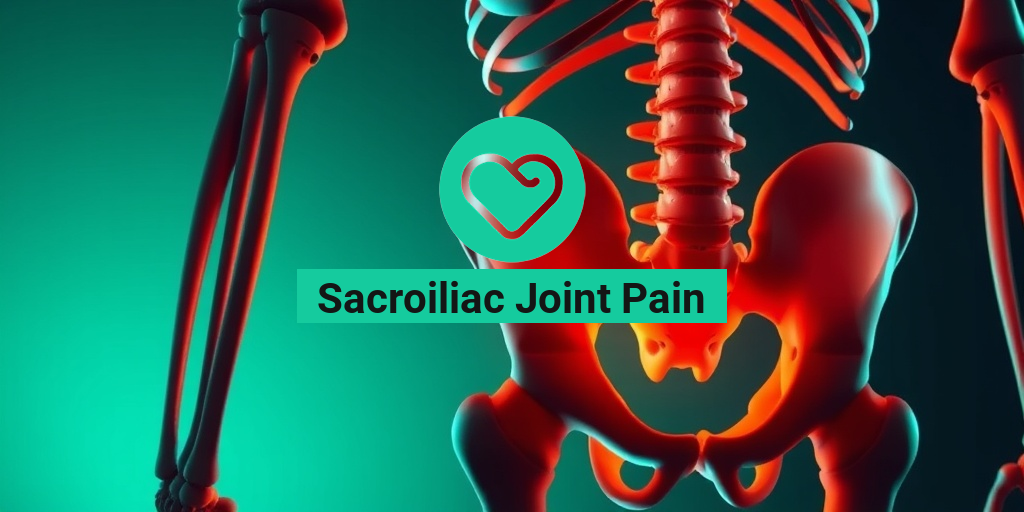What Are Pressure Sores?
Pressure sores, also known as bedsores or decubitus ulcers, are a common health issue that affects millions of people worldwide. They occur when there is prolonged pressure on a specific area of the body, causing damage to the skin and underlying tissues. This pressure can be due to various factors, such as immobility, poor circulation, or inadequate nutrition.
Causes of Pressure Sores
Pressure sores can develop in anyone, but they are more common in people who are:
- Bedridden or wheelchair-bound for an extended period
- Malnourished or dehydrated
- Diabetic or have poor circulation
- Obese or have a history of obesity
- Aging, as skin becomes thinner and more fragile with age
When pressure is applied to a specific area, it can reduce blood flow, leading to tissue damage and eventually, the formation of a pressure sore. The most common areas affected are the:
- Buttocks
- Heels
- Back
- Head
- Feet
Pressure Sores Symptoms
Pressure sores can manifest in different ways, and it’s essential to recognize the early signs to prevent further damage. The symptoms may vary depending on the stage of the pressure sore, but common signs include:
Early Stages
In the early stages, pressure sores may appear as:
- Redness and swelling in the affected area
- Warmth or tenderness to the touch
- Discoloration, such as blue or purple, due to poor circulation
Advanced Stages
If left untreated, pressure sores can progress to more severe stages, characterized by:
- Open sores or ulcers with a foul odor
- Pus or discharge from the wound
- Fever or chills, indicating infection
- Pain or discomfort, which can be severe
It’s crucial to seek medical attention if you or a loved one is experiencing any of these symptoms. Early detection and treatment can significantly improve the chances of recovery and prevent further complications.
Remember, pressure sores are preventable with proper care and attention. If you’re concerned about pressure sores or have questions about prevention and treatment, consider consulting with a healthcare professional or visiting a trusted resource like Yesil Health AI for evidence-based health answers.
👍 Stay informed, stay healthy! 👍
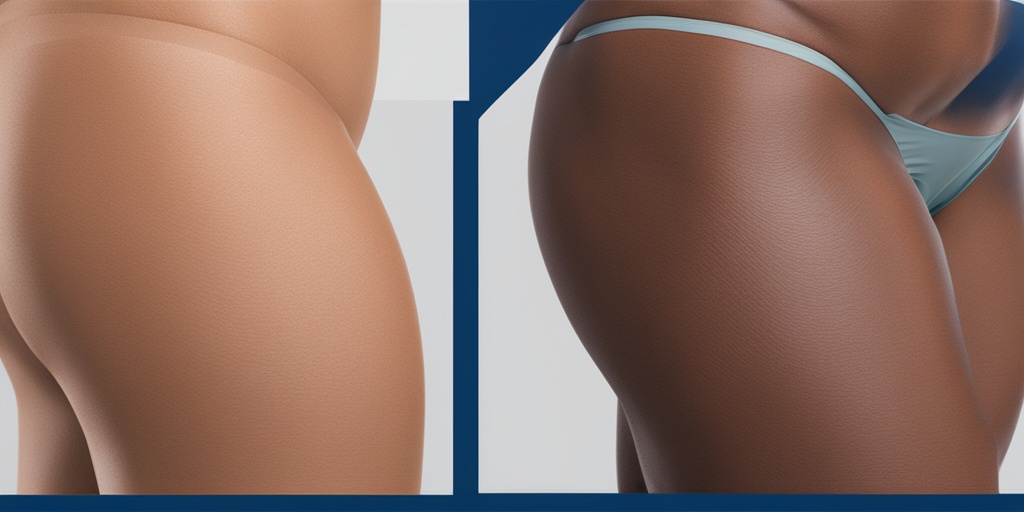
Pressure Sores Stages
Pressure sores, also known as bedsores or decubitus ulcers, are a common health issue that affects millions of people worldwide. These painful wounds occur when constant pressure or friction on the skin causes damage to the underlying tissue. Understanding the different stages of pressure sores is crucial for effective prevention, diagnosis, and treatment. In this section, we’ll delve into the four stages of pressure sores and what you need to know about each one.
Stage 1: Non-Blanchable Erythema
The first stage of pressure sores is characterized by non-blanchable erythema, which means that the skin appears red and does not return to its normal color when pressed. This stage is often reversible with proper treatment and care. You may notice:
- Redness or discoloration of the skin
- Warmth or swelling in the affected area
- Tenderness or pain when touched
Stage 2: Partial-Thickness Skin Loss
In the second stage, the skin begins to break down, and partial-thickness skin loss occurs. This stage is more severe than the first and may require medical attention. You may notice:
- Open sores or blisters
- Shallow ulcers with a red or pink base
- Pain or discomfort in the affected area
Stage 3: Full-Thickness Skin Loss
The third stage of pressure sores is characterized by full-thickness skin loss, which means that the wound extends beyond the skin and into the underlying tissue. This stage is more severe and may require surgical intervention. You may notice:
- Deep ulcers with a yellow or black base
- Exposed bone, tendon, or muscle
- Severe pain or discomfort in the affected area
Stage 4: Full-Thickness Skin and Tissue Loss
The final stage of pressure sores is the most severe and life-threatening. It involves full-thickness skin and tissue loss, which can lead to serious complications, such as sepsis or organ failure. You may notice:
- Extensive tissue damage or necrosis
- Exposed bone, tendon, or muscle
- Severe pain or discomfort in the affected area
It’s essential to seek medical attention immediately if you or a loved one is experiencing any of these symptoms. Early detection and treatment can significantly improve outcomes and prevent further complications.
Pressure Sores Causes and Risk Factors
Pressure sores are often preventable, but they can occur due to various causes and risk factors. Understanding these factors is crucial for taking proactive steps to prevent pressure sores and reduce the risk of developing them.
Causes of Pressure Sores
Pressure sores can occur due to:
- Prolonged immobility: Spending extended periods in bed or a wheelchair can lead to pressure sores.
- Friction and shear: Friction and shear forces can cause skin damage and pressure sores, especially in areas with bony prominences.
- Moisture: Excessive moisture can lead to skin maceration and increase the risk of pressure sores.
- Nutritional deficiencies: Poor nutrition can impede wound healing and increase the risk of pressure sores.
Risk Factors for Pressure Sores
Certain individuals are more prone to developing pressure sores due to:
- Age: Older adults are more susceptible to pressure sores due to decreased mobility and skin elasticity.
- Chronic medical conditions: Conditions like diabetes, heart disease, and kidney disease can increase the risk of pressure sores.
- Obesity: Excess weight can put additional pressure on the skin, increasing the risk of pressure sores.
- Smoking: Smoking can reduce blood flow to the skin, making it more susceptible to pressure sores.
By understanding the causes and risk factors of pressure sores, you can take proactive steps to prevent them and reduce the risk of developing these painful and debilitating wounds. 💡

Pressure Sores Diagnosis
Pressure sores, also known as bedsores or decubitus ulcers, can be a painful and debilitating condition that affects millions of people worldwide. If you or a loved one is experiencing pressure sores, it’s essential to get an accurate diagnosis to receive proper treatment and prevent further complications. In this section, we’ll explore the diagnosis process for pressure sores.
Visual Examination
The diagnosis of pressure sores typically begins with a visual examination by a healthcare professional. They will inspect the affected area, looking for signs of skin damage, such as redness, swelling, or open sores. The healthcare professional may also ask questions about the patient’s medical history, including any underlying conditions that may contribute to the development of pressure sores.
Staging System
Pressure sores are typically classified into four stages, ranging from mild to severe. The staging system helps healthcare professionals determine the severity of the pressure sore and develop an appropriate treatment plan.
- Stage 1: Non-blanchable erythema, which means the skin is red and does not turn white when pressed.
- Stage 2: Partial-thickness skin loss, which means the top layer of skin is damaged, but the underlying tissue is still intact.
- Stage 3: Full-thickness skin loss, which means the skin is severely damaged, and the underlying tissue is exposed.
- Stage 4: Full-thickness skin loss with extensive tissue damage, which means the pressure sore has penetrated to the muscle, bone, or other supporting structures.
Other Diagnostic Tests
In some cases, additional diagnostic tests may be necessary to rule out other conditions or to assess the severity of the pressure sore. These tests may include:
- X-rays or CT scans to check for bone or joint damage
- Biopsies to examine tissue samples
- Cultures to identify any underlying infections
Pressure Sores Treatment Options
Once a pressure sore has been diagnosed, it’s essential to start treatment promptly to promote healing, prevent further complications, and alleviate discomfort. The goal of treatment is to relieve pressure, promote wound healing, and manage any underlying conditions that may be contributing to the pressure sore.
Relieving Pressure
The first step in treating pressure sores is to relieve pressure on the affected area. This can be achieved through:
- Frequent repositioning, such as turning or rotating the patient every 2 hours
- Using pressure-redistributing mattresses or cushions
- Implementing a pressure-relief protocol, such as using a pressure-relief pad or mattress overlay
Wound Care
Proper wound care is crucial for promoting healing and preventing infection. This may involve:
- Cleaning the wound with saline solution or sterile water
- Applying topical antibiotics or antimicrobial dressings
- Covering the wound with a dressing or bandage
Pain Management
Pressure sores can be extremely painful, and managing pain is an essential part of treatment. This may involve:
- Administering pain medication, such as acetaminophen or ibuprofen
- Using topical pain-relieving creams or gels
- Implementing alternative pain management techniques, such as massage or acupuncture
Remember, pressure sores require prompt and proper treatment to prevent further complications and promote healing. If you or a loved one is experiencing pressure sores, consult with a healthcare professional to develop an individualized treatment plan. 💊
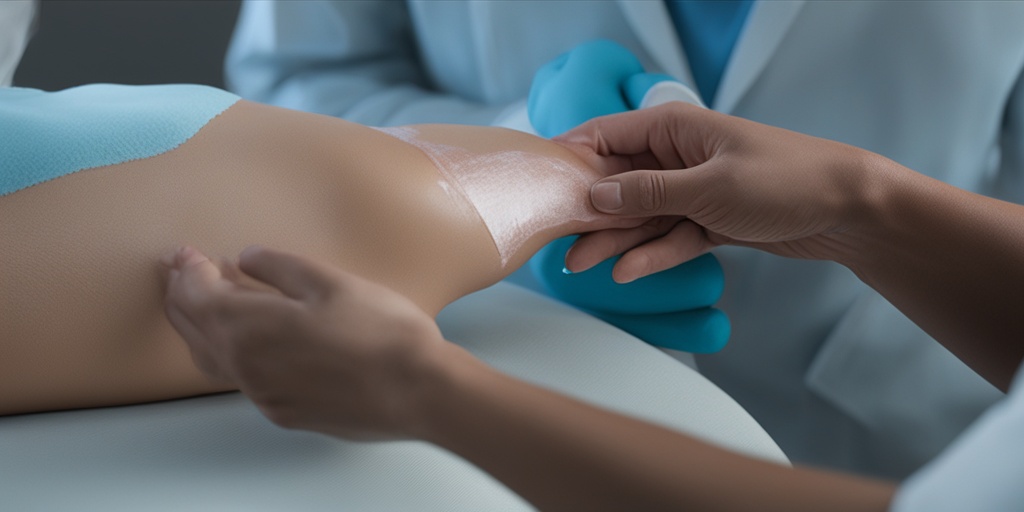
Pressure Sores Prevention Strategies
Pressure sores, also known as bedsores or decubitus ulcers, are a common issue for individuals who are bedridden or have limited mobility. These painful sores can develop quickly, and if left untreated, can lead to serious complications. The good news is that pressure sores can be prevented with the right strategies. In this section, we’ll explore the most effective ways to prevent pressure sores.
Repositioning and Turning
One of the most critical prevention strategies is repositioning and turning. This involves regularly changing the position of the individual to reduce pressure on specific areas of the body. It’s recommended to turn the person every 2 hours, or more frequently if they are at high risk of developing pressure sores. This can be done by caregivers, family members, or healthcare professionals.
Using Pressure-Reducing Mattresses and Cushions
Specialized mattresses and cushions can help reduce pressure on the skin. These products are designed to redistribute pressure, providing extra comfort and support. Look for mattresses and cushions with a high-density foam core, as they are more effective at reducing pressure.
Wound Care and Skin Inspection
Regular skin inspection is crucial for identifying early signs of pressure sores. Check for redness, swelling, and warmth, as these can be indicative of pressure sore development. Additionally, proper wound care is essential for preventing infection and promoting healing.
Proper Nutrition and Hydration
A well-balanced diet rich in protein, vitamins, and minerals is essential for maintaining healthy skin. Adequate hydration is also crucial, as it helps to keep the skin hydrated and supple. Encourage individuals to drink plenty of water throughout the day.
Exercise and Mobility
Regular exercise and mobility can help improve circulation, reduce pressure, and promote overall health. Encourage individuals to engage in gentle exercises, such as stretching or yoga, to improve flexibility and mobility.
Pressure Sores Complications
Pressure sores can lead to serious complications if left untreated or poorly managed. These complications can be painful, debilitating, and even life-threatening. In this section, we’ll explore the potential complications of pressure sores.
Infection and Sepsis
One of the most common complications of pressure sores is infection. Bacteria can enter the wound, causing infection, which can lead to sepsis, a life-threatening condition. Monitor for signs of infection, such as redness, swelling, and increased pain.
Cellulitis and Abscesses
Cellulitis, a bacterial infection of the skin, can occur when pressure sores are not properly treated. Abscesses, or pockets of pus, can also form, leading to further complications.
Osteomyelitis
Osteomyelitis, a bone infection, can occur when pressure sores extend deep into the bone. This can lead to chronic pain, limited mobility, and even amputation.
Sepsis and Organ Failure
In severe cases, pressure sores can lead to sepsis, a life-threatening condition that can cause organ failure. Seek immediate medical attention if you notice signs of sepsis, such as fever, chills, and confusion.
By understanding the prevention strategies and potential complications of pressure sores, you can take proactive steps to protect yourself or loved ones from these painful and debilitating sores. Remember, prevention is key, and early intervention can make all the difference. 💊
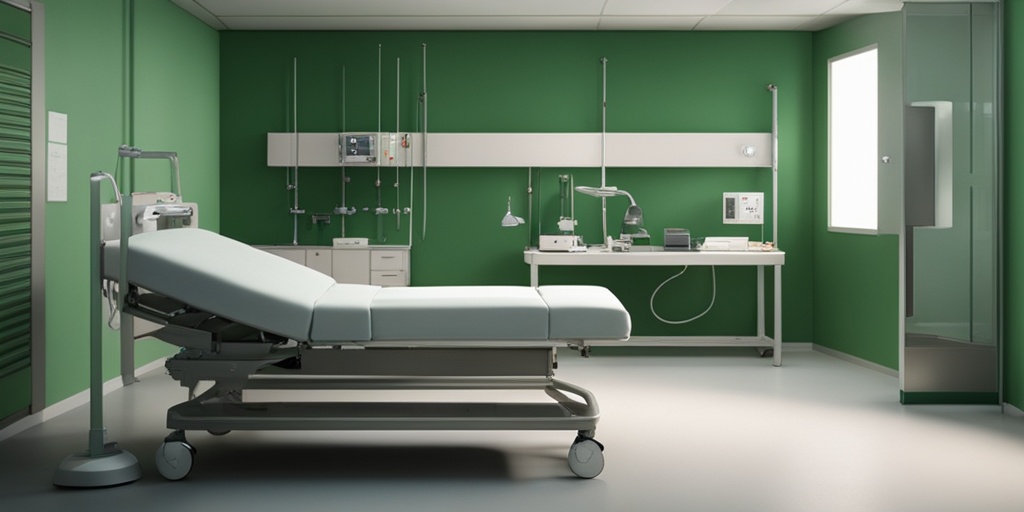
Frequently Asked Questions about Pressure Sores
What are Pressure Sores?
Pressure sores, also known as bedsores or decubitus ulcers, are injuries that occur when there is prolonged pressure on the skin, causing damage to the skin and underlying tissues.
What Causes Pressure Sores?
Pressure sores are often caused by immobility, poor circulation, and inadequate nutrition. They can also be caused by friction, shear, and moisture.
Who is at Risk of Developing Pressure Sores?
Individuals who are bedridden, wheelchair-bound, or have limited mobility are at high risk of developing pressure sores. Additionally, people with certain medical conditions, such as diabetes, circulatory problems, and spinal cord injuries, are also at risk.
What are the Stages of Pressure Sores?
Pressure sores progress through four stages, ranging from Stage 1 (non-blanchable erythema) to Stage 4 (full-thickness tissue loss). Early detection and treatment are crucial to prevent progression to more severe stages.
How are Pressure Sores Treated?
Treatment for pressure sores typically involves relieving pressure, managing pain, and promoting wound healing. This may include using pressure-redistributing mattresses, wound dressings, and antibiotics.
Can Pressure Sores be Prevented?
Yes, pressure sores can be prevented by taking regular breaks to change positions, using pressure-redistributing devices, and maintaining good hygiene and nutrition.
How Long Does it Take to Heal Pressure Sores?
The healing time for pressure sores varies depending on the stage and severity of the wound. On average, it can take several weeks to several months for pressure sores to heal.
Can Pressure Sores Cause Complications?
Yes, pressure sores can lead to complications such as infection, sepsis, and osteomyelitis if left untreated or poorly managed.
How Can I Care for Someone with Pressure Sores?
Caring for someone with pressure sores requires attention to their overall health, nutrition, and hygiene. It’s essential to provide regular turning and repositioning, manage pain, and promote wound healing.
What are the Best Sleeping Positions to Prevent Pressure Sores?
The best sleeping positions to prevent pressure sores include using a pressure-redistributing mattress and sleeping on your side with a pillow between your legs to reduce pressure on your hips and buttocks.
Can Pressure Sores Occur on Dogs?
Yes, pressure sores can occur on dogs, especially those that are immobile or have underlying medical conditions. It’s essential to provide regular exercise, proper nutrition, and adequate bedding to prevent pressure sores in dogs.
What are the Pictures of Pressure Sores on Buttocks?
Pressure sores on buttocks can appear as red, painful, and swollen areas on the skin. In severe cases, they can progress to open wounds with exposed tissue. It’s essential to seek medical attention if you suspect you or a loved one has developed a pressure sore.
Remember, early detection and treatment are crucial to preventing and managing pressure sores. If you have any concerns or questions, consult with a healthcare professional for personalized advice. 💊

